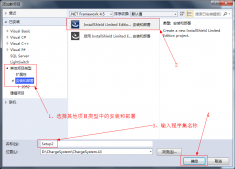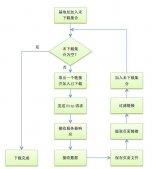本文实例讲述了C#中哈希表(HashTable)用法。分享给大家供大家参考,具体如下:
1. 哈希表(HashTable)简述
在.NET Framework中,Hashtable是System.Collections命名空间提供的一个容器,用于处理和表现类似keyvalue的键值对,其中key通常可用来快速查找,同时key是区分大小写;value用于存储对应于key的值。Hashtable中keyvalue键值对均为object类型,所以Hashtable可以支持任何类型的keyvalue键值对.
2. 什么情况下使用哈希表
(1)某些数据会被高频率查询
(2)数据量大
(3)查询字段包含字符串类型
(4)数据类型不唯一
3. 哈希表的使用方法
哈希表需要使用的namespace
|
1
2
|
using System.Collections;using System.Collections.Generic; |
哈希表的基本操作:
|
1
2
3
4
5
6
7
8
|
//添加一个keyvalue键值对:HashtableObject.Add(key,value);//移除某个keyvalue键值对:HashtableObject.Remove(key);//移除所有元素:HashtableObject.Clear();// 判断是否包含特定键key:HashtableObject.Contains(key); |
控制台程序例子:
|
1
2
3
4
5
6
7
8
9
10
11
12
13
14
15
16
17
|
using System;using System.Collections; //file使用Hashtable时,必须引入这个命名空间class Program{ public static void Main() { Hashtable ht = new Hashtable(); //创建一个Hashtable实例 ht.Add("北京", "帝都"); //添加keyvalue键值对 ht.Add("上海", "魔都"); ht.Add("广州", "省会"); ht.Add("深圳", "特区"); string capital = (string)ht["北京"]; Console.WriteLine(ht.Contains("上海")); //判断哈希表是否包含特定键,其返回值为true或false ht.Remove("深圳"); //移除一个keyvalue键值对 ht.Clear(); //移除所有元素 }} |
哈希表中使用多种数据类型的例子:
|
1
2
3
4
5
6
7
8
9
10
11
12
13
14
15
16
17
18
19
20
|
using System;using System.Collections;class Program{ static Hashtable GetHashtable() { Hashtable hashtable = new Hashtable(); hashtable.Add("名字", "小丽"); hashtable.Add("年龄", 22); return hashtable; } static void Main() { Hashtable hashtable = GetHashtable(); string name = (string)hashtable["名字"]; Console.WriteLine(name); int age = (int)hashtable["年龄"]; Console.WriteLine(age); }} |
当获取哈希表中数据时,如果类型声明的不对,会出现InvalidCastException错误。使用as-statements可以避免该错误。
|
1
2
3
4
5
6
7
8
9
10
11
12
13
14
15
16
17
18
19
20
21
22
23
24
25
26
27
28
29
30
|
using System;using System.Collections;using System.IO;class Program{ static void Main() { Hashtable hashtable = new Hashtable(); hashtable.Add(100, "西安"); // 能转换成功 string value = hashtable[100] as string; if (value != null) { Console.WriteLine(value); } // 转换失败,获取的值为null,但不会抛出错误。 StreamReader reader = hashtable[100] as StreamReader; if (reader == null) { Console.WriteLine("西安不是StreamReader型"); } // 也可以直接获取object值,再做判断 object value2 = hashtable[100]; if (value2 is string) { Console.Write("这个是字符串型: "); Console.WriteLine(value2); } }} |
4. 遍历哈希表
遍历哈希表需要用到DictionaryEntry Object,代码如下:
|
1
2
3
4
5
|
for(DictionaryEntry de in ht) //ht为一个Hashtable实例{ Console.WriteLine(de.Key); //de.Key对应于keyvalue键值对key Console.WriteLine(de.Value); //de.Key对应于keyvalue键值对value} |
遍历键
|
1
2
3
4
|
foreach (int key in hashtable.Keys){ Console.WriteLine(key);} |
遍历值
|
1
2
3
4
|
foreach (string value in hashtable.Values){ Console.WriteLine(value);} |
5. 对哈希表进行排序
对哈希表按key值重新排列的做法:
|
1
2
3
4
5
6
|
ArrayList akeys=new ArrayList(ht.Keys);akeys.Sort(); //按字母顺序进行排序foreach(string key in akeys){ Console.WriteLine(key + ": " + ht[key]); //排序后输出} |
6. 哈希表的效率
System.Collections下的哈希表(Hashtable)和System.Collections.Generic下的字典(Dictionary)都可用作lookup table,下面比较一下二者的执行效率。
|
1
2
3
4
5
6
7
8
9
10
11
12
13
14
15
16
17
18
19
20
21
22
23
24
25
26
27
28
29
30
31
32
|
Stopwatch sw = new Stopwatch();Hashtable hashtable = new Hashtable();Dictionary<string, int> dictionary = new Dictionary<string, int>();int countNum = 1000000;sw.Start();for (int i = 0; i < countNum; i++){ hashtable.Add(i.ToString(), i);}sw.Stop();Console.WriteLine(sw.ElapsedMilliseconds); //输出: 744sw.Restart();for (int i = 0; i < countNum; i++){ dictionary.Add(i.ToString(), i);}sw.Stop();Console.WriteLine(sw.ElapsedMilliseconds); //输出: 489sw.Restart();for (int i = 0; i < countNum; i++){ hashtable.ContainsKey(i.ToString());}sw.Stop();Console.WriteLine(sw.ElapsedMilliseconds); //输出: 245sw.Restart();for (int i = 0; i < countNum; i++){ dictionary.ContainsKey(i.ToString());}sw.Stop();Console.WriteLine(sw.ElapsedMilliseconds); //输出: 192 |
由此可见,添加数据时Hashtable快。频繁调用数据时Dictionary快。
结论:Dictionary<K,V>是泛型的,当K或V是值类型时,其速度远远超过Hashtable。
希望本文所述对大家C#程序设计有所帮助。















